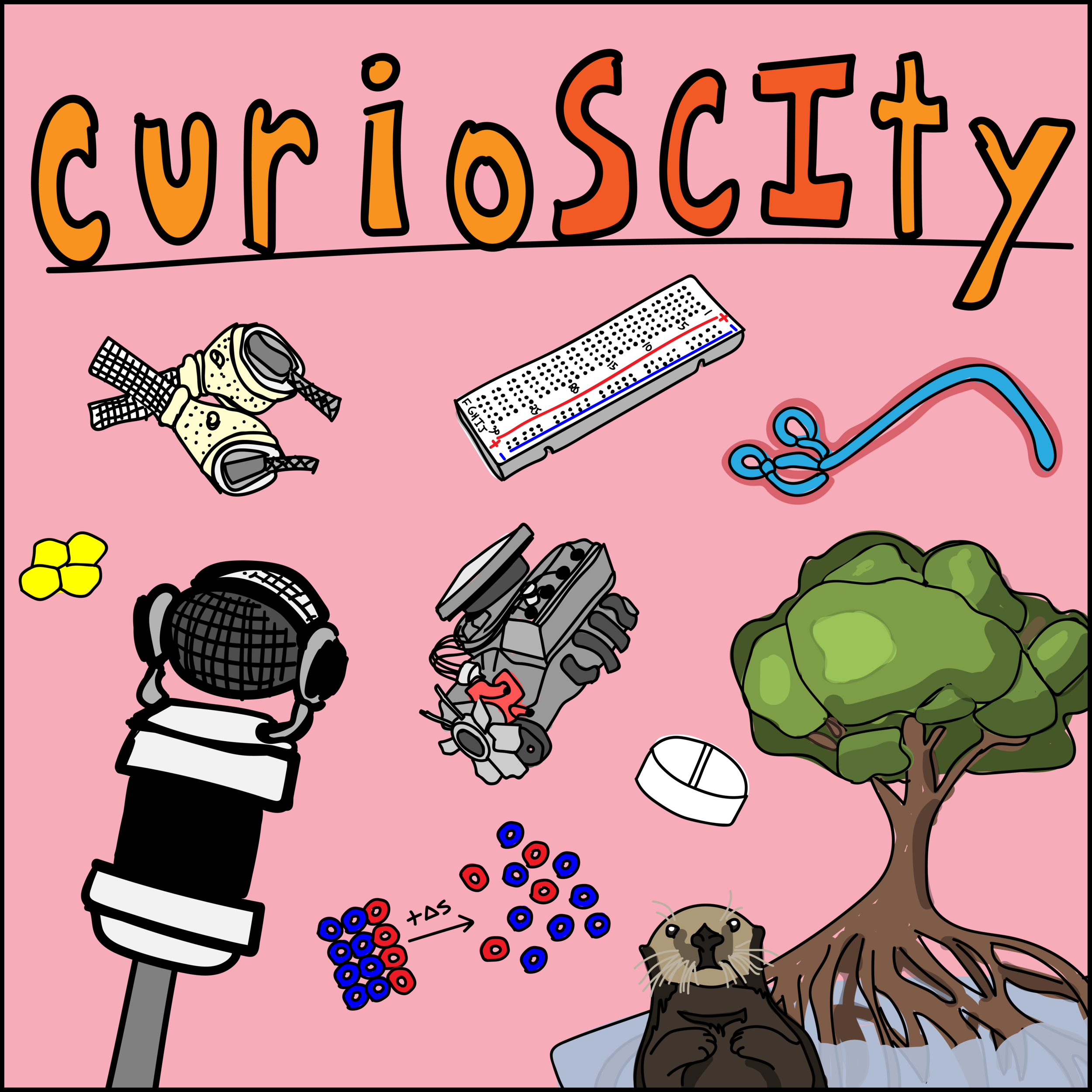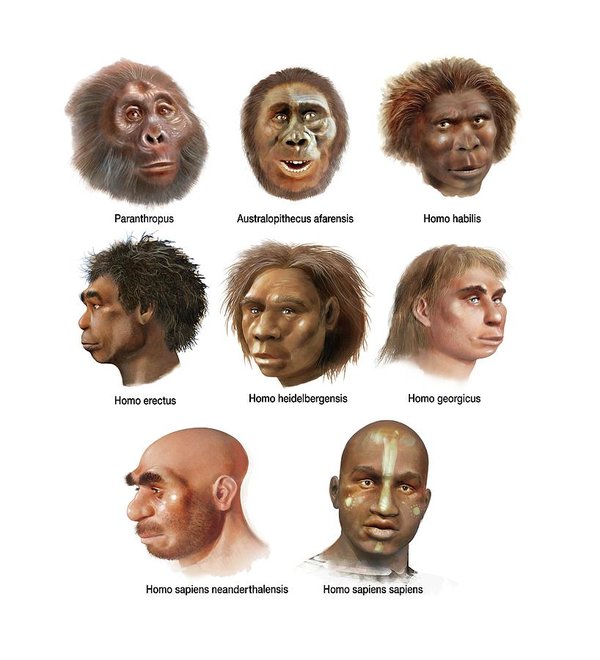29 - Human Evolution and Migration (w/ Molly Rathbun!)
29. Human Evolution and Migration
This show has previously discussed the concept of evolution, but it’s time to put it into practice with our own species. Humankind as we understand it only developed a few hundred thousand years ago and was surrounded by “cousin” hominids from genetic ancestors. Let’s learn to be scientifically conversational.
General Learning Concepts
1) A Primer on Evolution
a. What is evolution? Evolution consists of changes in the heritable traits of a population of organisms as successive generations replace one another. It is populations of organisms that evolve, not individual organisms.
i. Berkley EDU puts it as: Biological evolution, simply put, is descent with modification.
b. What is evolution responsible for? What isn’t it? Evolution is responsible for the genetic differences observed by descent of organisms. It highlights the importance of genetic variation and the random nature of genetic drift. It helps explain natural selection and differential reproduction, and how different species can coevolve. It is not responsible for making organisms “better”; rather, more suited to their environments with a range of traits, not even considering evolutional drift and shift. Evolution does not promote individual evolution, but rather a population. Evolution is not always slow; this can happen more rapidly, especially with microbes. While the catchphrase of natural selection is “survival of the fittest”, this does not mean that less fit organisms cannot survive: some things are fit enough. Finally, not all traits of organisms are a consequence of adaptation; there is a great deal of history that comes along with many organisms.
2) The Human Lineage (or interesting members along the way)
a. Australophithecus afarensis: From more than 300 individuals, we understand A. afarensis as one of the longest-lived early human species. Lived approximately 3.85 – 2.95 million years ago and survived for 900,000 years. Similar to chimpanzees, A. afarensis grew to maturity in a shorter time than humans do now, which could have resulted in less socialization during childhood. Apelike proportions: flat nose, strongly projecting lower jaw. Brain size was approximately 1/3 smaller than a modern human brain. A. afarensis walked upright and had curved fingers for climbing, which allowed to live both in trees and the ground. [2]
i. Lucy: Very well preserved (considering she was only 3.2 million years young!) specimen discovered by Donald Johanson and Maurice Taieb in Ethiopia. Bone structure signaled a powerful chest and strong upper arms for climbing. Pelvic and leg bones suggested standing upright, complete with compact feet. “Lucy was nicknamed the night she was discovered while Johanson’s team celebrated to the Beatles’ hit “Lucy in the Sky with Diamonds.” Her Ethiopian name ‘Dinknesh’ is the Amharic term for ‘You are marvelous.’ “
b. Homo habilis: One of the earliest members of the genus Homo, credited with representing the first species to make stone tools (though this is challenging to prove because they cohabited locations with other early hominids). 2.4 million to 1.4 million years ago. Still maintained long arms but had a larger braincase, smaller face and teeth.
c. Homo erectus: The oldest known early human to present smaller arms and longer legs. 1.89 to 143,000 years ago. Likely beginning to lose the ability to climb and live in trees. Possibly one of the earlier hominid species to eat meat in order to power a larger brain; around this time, the first evidence of hearths (campfires) occur. Innovations of stone technology (Acheulean stone tools) included handaxes and cleavers. Likely coexisted with other early human species (long ago: habilus, recently: sapiens).
d. Homo neanderthalensis: Closest extinct human relative, likely evolved from same common ancestor (Homo heidelbergensis) as modern humans. Angled cheek bones, large nose for humifying and warming cold air. Large brains, often larger than modern humans, but shorter in stature. Used sophisticated tools, controlled fire, wore clothing, lived in shelter. Evidence for deliberate grave digging and symbolism. Likely seasonal hunters. Hunted, sewed loose-fitting garments weaved together with animal tissue. Traces of Neaderthals disappeared 40,000 years ago.
e. Homo sapiens: Look, it’s you! We developed 300,000 years ago during a time of dramatic climate change. We’ve got very large brains, thin walled high vaulted skulls with a near flat forehead, less developed jaws and smaller teeth. No “type-specimen”. Also masters of tool-building, resulting in bows, fishhooks, spears, needles. Began agricultural development only 12,000 years ago, which transformed the Earth’s landscape. Built social networks, art, music, adornments, and vastly increased their own numbers.
3) Migration
a. Australophithecus afarensis: Eastern Africa.
b. Homo habilis: Eastern and Southern Africa.
c. Homo erectus: Northern, Eastern, and Southern Africa; Western and Eastern Asia. First species thought to expand beyond Africa.
d. Homo neanderthalensis: Europe and southwestern to central Asia.
e. Homo sapiens: Originally evolved from Africa, but lives worldwide. First fossils that can be recognized of modern Homo sapiens comes from Ethiopia around 200,000 years ago, but only left roughly 60-80,000 years ago.
4) Fun Tidbits
a. Ancient DNA: Paleogenetics was spurred by the 1984 discovery of a quagga, an ancient extinct zebra subspecies, when DNA was extracted from fossilized remains. Organisms who have passed still contain DNA. This DNA is changed from our DNA by aging: cross-linking, deamination, fragmentation, and non-uniform processes. Additionally, microbial contamination can be a huge issue. Still, the complete Neanderthal mitochondrial genome has been sequenced of multiple individuals (interestingly from a wide geographical area with little genetic diversity). “On average, Neanderthal mtDNA genomes differ from each other by 20.4 bases and are only 1/3 as diverse as modern humans.” [2]
b. Neanderthal cross-breeding: Modern humans and Neanderthals inter-bred, with roughly 2% of the genomes of people who descended from Europe, Asians, and other non-Africans is Neanderthal (Calvin personally has approximately 4%, 61% more than other users of a particular genetic ancestry testing service). This could be troublesome, as some genes were too distantly related to allow for fertile young: think ligers from tigers and lions.
5) Solicited Questions
a. How are humans related to apes? Apes are our cousins, not our ancestors. We did not evolve from apes as we know them, but likely share a common ancestor. Apes do not have to evolve in the same way because their environment may not require it. Evolution doesn’t happen because something wants to evolve, but rather because it is advantageous to survive and pass on genes that allow for reproductive fitness.


